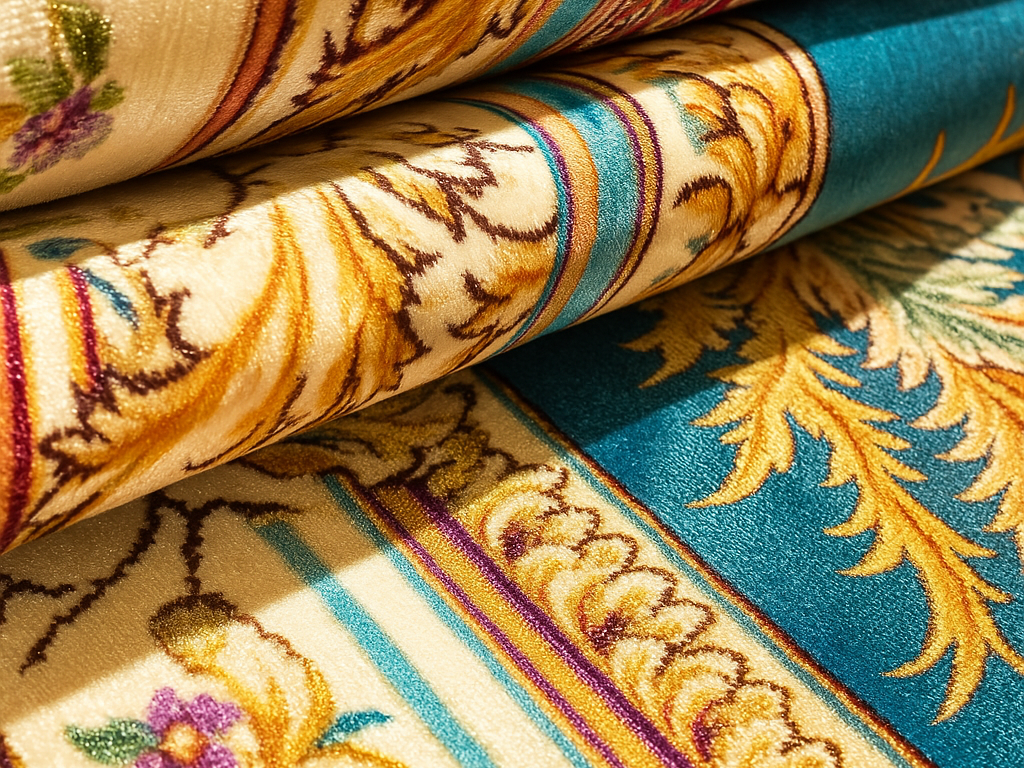Rugs are more than just decorative pieces; they add warmth and comfort to our homes. However, daily foot traffic, spills, and pet accidents can leave them looking and smelling less than fresh. While professional cleaning services are available, they can be costly and may involve harsh chemicals. Fortunately, baking soda offers a natural, affordable, and effective solution for cleaning and deodorizing your rugs at home.
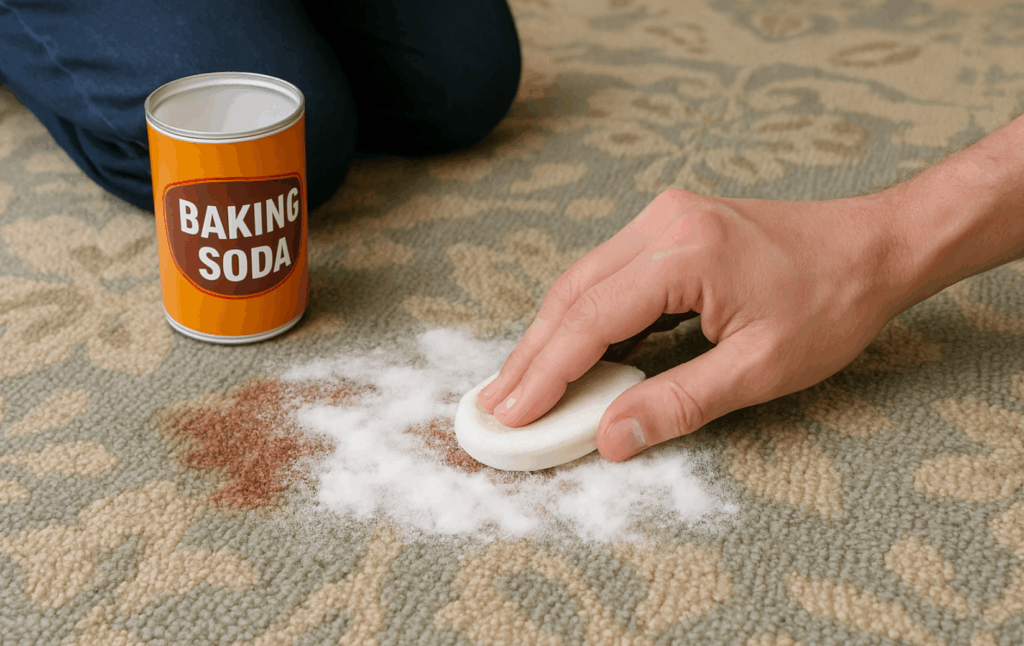
1. Why Choose Baking Soda for Rug Cleaning?
Baking soda, or sodium bicarbonate, is a versatile household staple known for its cleaning properties. Here’s why it’s an excellent choice for rug cleaning:
- Odor Neutralizer: Baking soda effectively absorbs and neutralizes unpleasant odors, leaving your rug smelling fresh.
- Stain Remover: Its mild abrasive nature helps lift stains without damaging rug fibers.
- Moisture Absorber: It can absorb moisture, preventing mold and mildew growth.
- Safe and Eco-Friendly: Unlike some chemical cleaners, baking soda is non-toxic and safe for use around children and pets.
These qualities make baking soda a go-to solution for maintaining clean and fresh rugs.
Lectura relacionada: ¿Es una alfombra un mueble? El desglose completo del diseño de interiores
2. What You Will Need to Clean Your Rug with Soda and Other Things
Cleaning your rug with baking soda is a straightforward process that requires minimal tools and ingredients. By assembling the right materials beforehand, you can ensure an efficient and effective cleaning session.
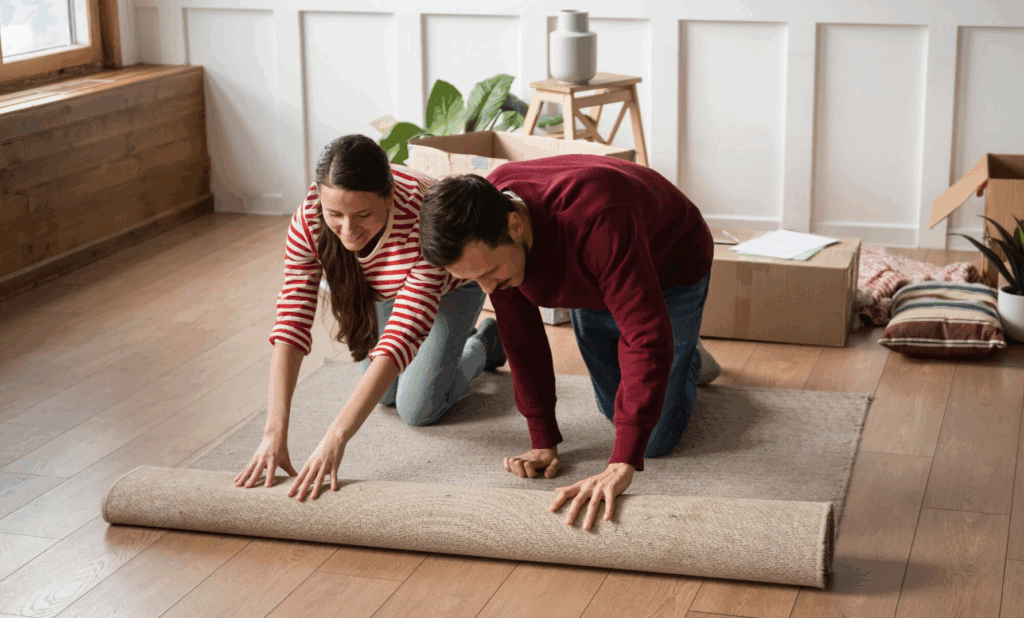
Baking Soda
Baking soda (sodium bicarbonate) is the cornerstone of this cleaning method. Its natural deodorizing and mild abrasive properties make it ideal for lifting dirt and neutralizing odors without damaging rug fibers. Ensure you have enough to cover the entire rug surface; typically, a standard-sized rug may require about 1 to 2 cups.
Vacuum Cleaner
A reliable vacuum cleaner is essential for both pre-cleaning and post-cleaning stages. Before applying baking soda, vacuuming removes loose dirt and debris, allowing the baking soda to penetrate deeper. After the treatment, vacuuming helps extract the baking soda along with the absorbed dirt and odors. For optimal results, use a vacuum with strong suction and a clean filter.
Soft-Bristle Brush or Broom
To work the baking soda into the rug fibers, a soft-bristle brush or broom is beneficial. Gently brushing helps the baking soda reach deeper layers, enhancing its cleaning efficacy. Avoid using stiff brushes, especially on delicate rugs, to prevent fiber damage.
Clean Cloth or Sponge
Having a clean, white cloth or sponge on hand is useful for spot cleaning stains. White materials are preferred to prevent color transfer onto the rug. In case of spills or specific stains, gently blotting with a damp cloth can help lift the stain before applying baking soda.
Warm Water
Warm water can be used to create a paste with baking soda for treating stubborn stains. Mixing baking soda with a small amount of warm water forms a spreadable paste that can be applied directly to stains, left to sit, and then blotted or scrubbed gently.
Essential Oils (Optional)
For an added touch of freshness, consider mixing a few drops of essential oils, such as lavender or tea tree oil, with the baking soda before application. This not only imparts a pleasant scent but also introduces additional antibacterial properties.
White Vinegar (Optional)
White vinegar can be combined with baking soda to tackle tougher stains and odors. When mixed, the chemical reaction helps break down grime and neutralize odors. However, always perform a spot test first, as vinegar may not be suitable for all rug types.
Spray Bottle (Optional)
A spray bottle filled with water or a vinegar-water solution can be used to lightly mist the rug after applying baking soda. This can help activate the baking soda and enhance its cleaning power. Ensure the rug is not overly saturated to prevent prolonged drying times.
Sieve or Shaker (Optional)
For even distribution of baking soda, a sieve or shaker can be employed. This ensures a uniform layer across the rug surface, optimizing the cleaning process.
Lectura relacionada: Cómo limpiar manchas de café en la alfombra: Guía profesional
3. How to Prepare Baking Soda Before Cleaning Your Rug
Proper preparation of baking soda enhances its effectiveness in cleaning and deodorizing rugs. By following these steps, you can ensure optimal results:
Select the Right Baking Soda
Use fresh, pure baking soda (sodium bicarbonate) without additives. Check the expiration date to ensure potency.
Determine the Appropriate Quantity
Estimate the amount needed based on rug size:
- Small rugs (e.g., 3×5 ft): Approximately ½ cup
- Medium rugs (e.g., 5×8 ft): Approximately 1 cup
- Large rugs (e.g., 8×10 ft): Approximately 1½ to 2 cups
Adjust quantities for heavily soiled areas.
Optional: Add Essential Oils for Fragrance
To impart a pleasant scent, mix a few drops of essential oil (e.g., lavender, tea tree, or lemon) with the baking soda. Combine thoroughly to distribute the oil evenly.
Use a Shaker or Sieve for Even Application
Place the prepared baking soda mixture into a shaker or fine-mesh sieve. This facilitates an even distribution over the rug surface, preventing clumps and ensuring uniform coverage.
Conduct a Spot Test
Before full application, perform a spot test on an inconspicuous area of the rug to check for colorfastness and material compatibility. Apply a small amount of the baking soda mixture, let it sit for 15 minutes, then vacuum. Inspect the area for any discoloration or damage.
Prepare the Rug Surface
Vacuum the rug thoroughly to remove loose dirt and debris. This step allows the baking soda to penetrate deeper into the fibers, enhancing its cleaning and deodorizing action.
Lectura relacionada: Cómo quitar manchas de pintura de una alfombra o moqueta
4. Step-by-Step Guide to Cleaning Rugs with Baking Soda
Cleaning your rug with baking soda is a straightforward process that can effectively remove odors, stains, and dirt. Follow these steps to ensure a thorough and safe cleaning:
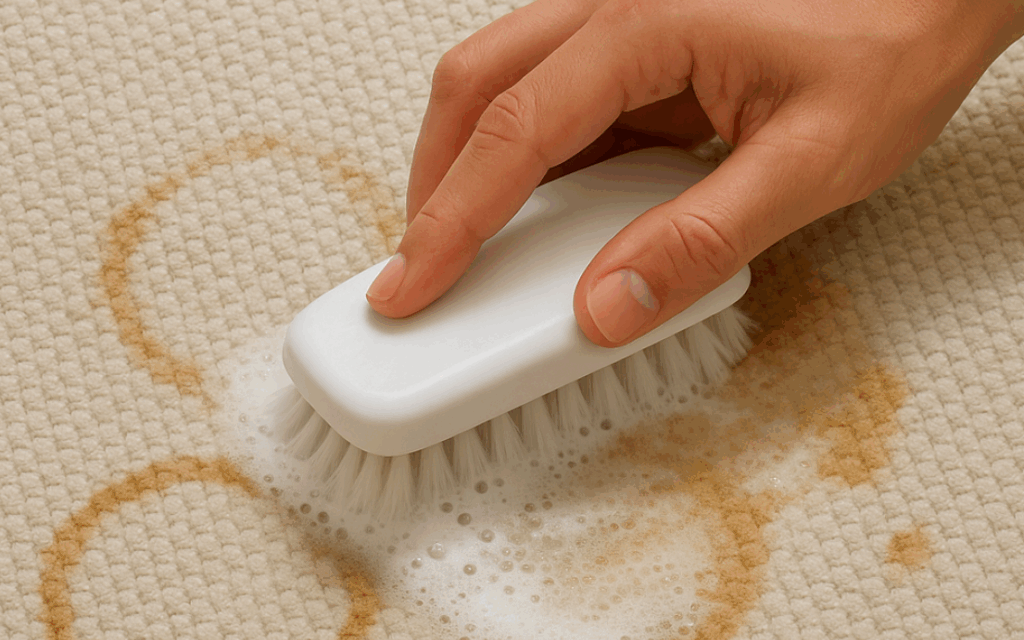
Step 1: Vacuum the Rug Thoroughly
Begin by vacuuming your rug to remove loose dirt, dust, and debris. This step is crucial as it allows the baking soda to penetrate deeper into the rug fibers, enhancing its cleaning effectiveness. Use a vacuum cleaner with strong suction and go over the rug in multiple directions to ensure all areas are clean.
Step 2: Conduct a Spot Test
Before applying baking soda to the entire rug, perform a spot test on a small, inconspicuous area. Sprinkle a small amount of baking soda, let it sit for 15 minutes, and then vacuum it up. Check for any discoloration or damage. If the rug shows no adverse effects, proceed with the full application.
Step 3: Apply Baking Soda Evenly
Sprinkle a generous amount of baking soda over the entire surface of the rug. For even distribution, consider using a sieve or a shaker. Pay extra attention to high-traffic areas and spots with noticeable odors or stains.
Step 4: Work the Baking Soda into the Fibers
Using a soft-bristled brush or broom, gently work the baking soda into the rug fibers. This helps the baking soda reach deeper layers, enhancing its ability to absorb odors and loosen dirt. Be gentle to avoid damaging delicate fibers.
Step 5: Let the Baking Soda Sit
Allow the baking soda to sit on the rug for at least 15 minutes. For more effective deodorizing and stain removal, leaving it overnight is recommended. This extended period gives the baking soda ample time to absorb odors and break down stains.
Step 6: Vacuum the Rug Again
After the baking soda has had time to work, vacuum the rug thoroughly to remove all the powder. Make multiple passes in different directions to ensure complete removal. This step not only removes the baking soda but also lifts away the absorbed dirt and odors.
Step 7: Spot Clean Stubborn Stains (If Necessary)
If any stains remain after vacuuming, create a paste by mixing baking soda with a small amount of water. Apply the paste to the stained area and gently scrub with a soft brush or cloth. Let it sit for 10-15 minutes, then blot with a damp cloth to remove the paste. Dry the area thoroughly.
Optional: Enhance Cleaning with Vinegar
For tougher stains or odors, you can combine baking soda with white vinegar. After applying baking soda, lightly spray a mixture of equal parts water and white vinegar over the area. The resulting fizz helps lift stains and neutralize odors. Once the fizzing stops, blot the area with a clean cloth and let it dry completely.
5. Tips to Maintain Your Rug after Cleaning with Soda
After refreshing your rug with baking soda, maintaining its cleanliness and appearance is essential to prolong its lifespan and ensure a healthy living environment. Implementing the following practices will help keep your rug looking and smelling fresh:
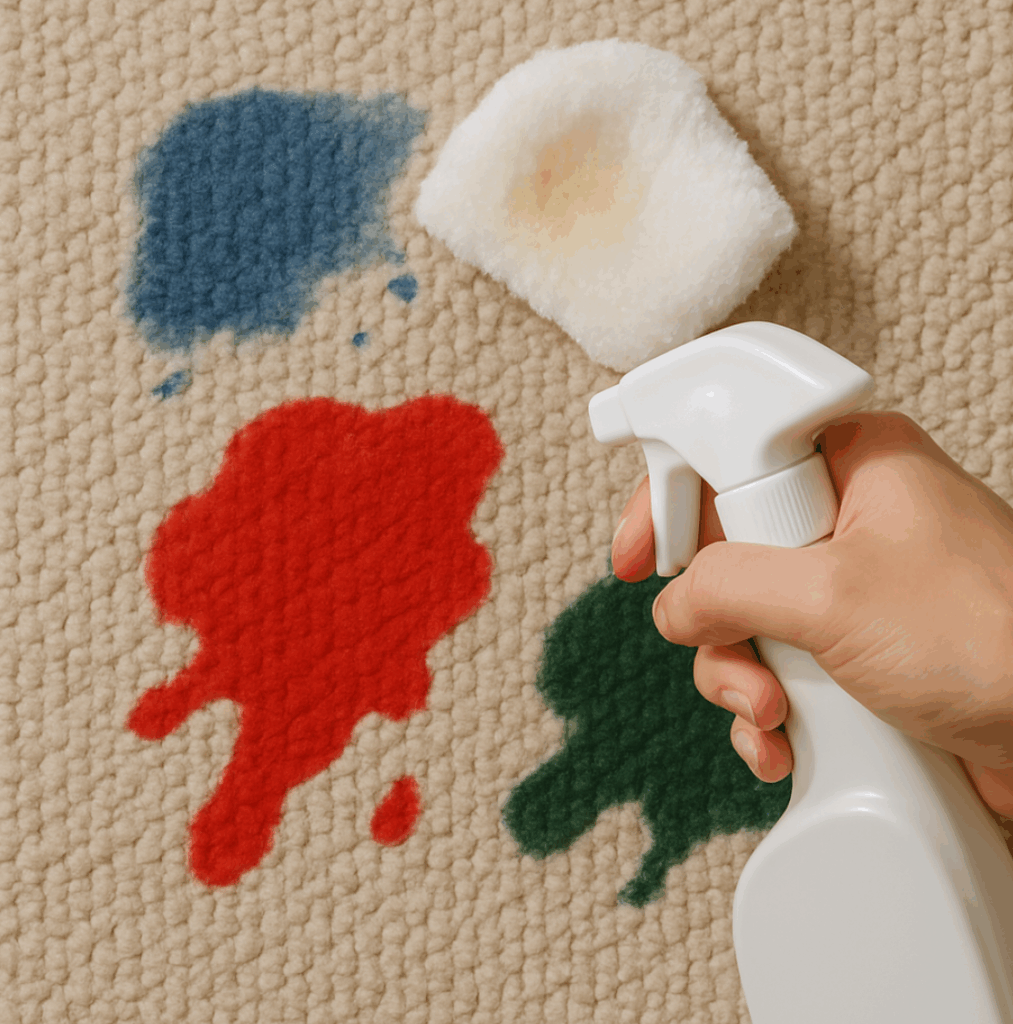
Aspiración regular
Consistent vacuuming prevents dirt and debris from settling into the rug fibers. Aim to vacuum high-traffic areas at least once a week and less frequented areas every two weeks. This routine not only maintains cleanliness but also preserves the rug’s texture and color.
Prompt Spill Management
Address spills immediately to prevent stains. Blot the spill gently with a clean, absorbent cloth—avoid rubbing, as it can push the spill deeper into the fibers. For stubborn stains, consider using a mild detergent or a mixture of water and vinegar, depending on the rug material.
Rotate Your Rug
Rotating your rug every 3 to 6 months ensures even wear and exposure to sunlight, preventing uneven fading and traffic patterns. This simple step can significantly extend the rug’s aesthetic appeal and structural integrity.
Utilice protectores de alfombras
Placing a rug pad underneath provides cushioning, reduces slippage, and minimizes wear. It also allows for better air circulation, which can prevent moisture buildup and potential mold growth.
Deep Clean Periodically
Even with regular maintenance, rugs benefit from a deeper clean every 12 to 18 months. This can involve a more thorough baking soda treatment or professional cleaning services, especially for delicate or high-value rugs.
Ensure Proper Drying
After any cleaning, ensure the rug dries completely to prevent mold and mildew. Hang the rug in a well-ventilated area or use fans to expedite drying. Avoid placing the rug back on the floor until it’s fully dry.
Avoid Harsh Chemicals
Steer clear of strong chemical cleaners that can damage rug fibers or fade colors. Opt for natural cleaning agents like baking soda or vinegar, and always test any new cleaning solution on a small, inconspicuous area first.
Regularly Shake Out Smaller Rugs
For smaller rugs, take them outside and give them a good shake to remove dust and debris. This quick action can complement your vacuuming routine and keep the rug fresh between deep cleans.
6. Conclusión
Maintaining a clean and fresh rug doesn’t require expensive products or professional services. With the simple, natural power of baking soda, you can effectively remove odors, lift stains, and rejuvenate your rug’s appearance—all from the comfort of your home. By following the step-by-step guide and incorporating the maintenance tips discussed, your rugs can remain vibrant and inviting for years to come.
Remember, regular care is key. Embrace the eco-friendly approach of using baking soda, and enjoy the comfort and cleanliness it brings to your living space.
7. Preguntas frecuentes
Q1: Can I use baking soda on all types of rugs?
A1: Baking soda is safe for most rugs, but always perform a spot test to ensure colorfastness.
Q2: How often should I clean my rug with baking soda?
A2: For general freshness, once a month is sufficient. For high-traffic areas, consider bi-weekly cleaning.
Q3: Will baking soda remove pet odors?
A3: Yes, baking soda effectively neutralizes pet odors.
Q4: Can I mix baking soda with vinegar for cleaning?
A4: Yes, combining baking soda with vinegar can enhance cleaning, but test on a small area first.
Q5: Is it safe to use baking soda around children and pets?
A5: Baking soda is non-toxic and safe for use around children and pets.

